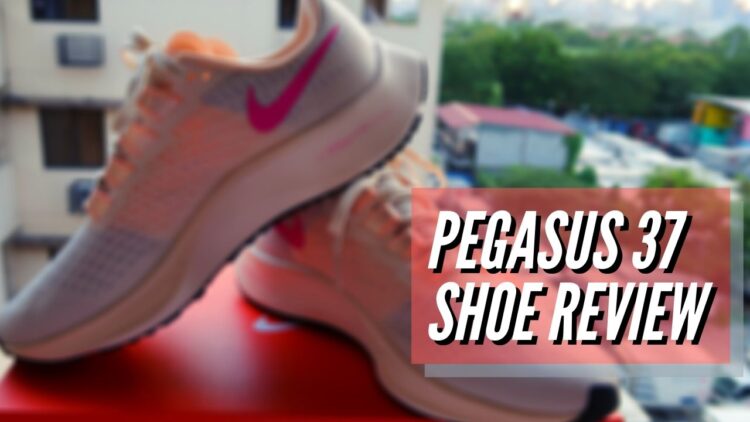This week I finally finished the required 50 kilometers for the World Vision Virtual Run for Children, which I ran almost exclusively in the Nike Air Zoom Pegasus 37. So these shoes are broken in and I can definitely say they feel different now than they did a few weeks ago, which is par for the course for the Pegasus line. If you missed it, check out my First Impressions post.
What I found is that despite the more beefy appearance of the shoe due to all that React foam in the midsole, they aren’t really heavy underfoot. And while I found the forefoot Zoom Air cushion strange in the beginning, it provided a lot of comfort as my runs grew longer and built into more intensity. The issues of heel slippage and tightness across the top of the shoe grew less urgent as even the materials of the upper and laces broke in and developed some give. (I do think there’s a subset of people for whom the loose heel fit will be a dealbreaker, but as a triathlete I’m used to having loose ankle collars to allow for fast transitions.)
For me it’s probably not going to be a sprint triathlon race shoe as the Pegasus 35 was able to become after a year of use, but I do think the Pegasus 37 slots into my rotation a bit better as a high mileage daily trainer. I found that the 35’s beat my feet up as I edged closer to the 21K mark, which is why I retired them after last year’s half marathon at the SCSM. I think with the React midsole, the Pegasus can handle the mileage better without losing its spring. For long course triathletes, marathoners, and half marathoners, I think this is the shoe if you train in the same thing you race in.
While the Infinity React Flyknit is flashier and looks very speedy (I spotted ITU world champion Vincent Luis wearing it on his Instagram), I appreciate what the Pegasus 37 has under the hood and will definitely be reaching for that pair when I want something reliable on my feet. That’s what the Pegasus is: an old faithful friend.
Watch my vlog review below:

